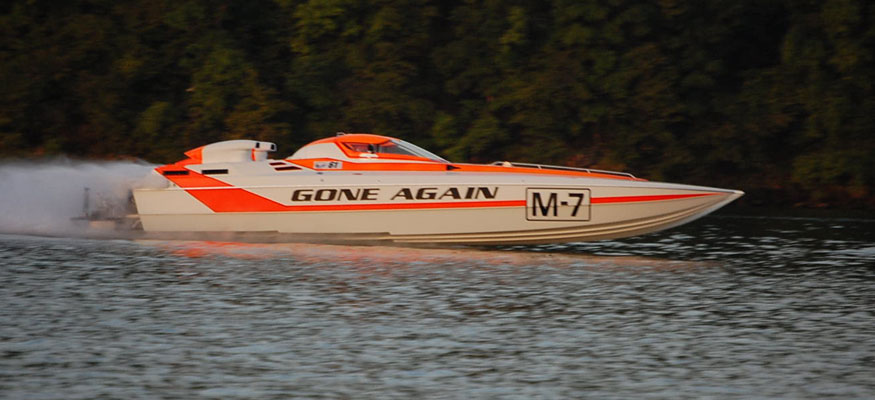Sterling’s D’Anniballe on E-Fuel Marine Engines: ‘Definitely Doable’
By the end of 2015, Mike D’Aniballe and his crew at Sterling Performance in Milford, Mich., will have burned through more than 10,000 gallons of ethanol/gasoline blend fuels—from 10-percent-ethanol E10 to 85-percent-ethanol E85— during long hours of durability testing fuel pumps and other fuel system components for a number of major automobile industry parts suppliers. D’Anniballe, who worked for McLaren before founding Sterling almost 25years ago, said that while gasoline blended with ethanol can wreak corrosive havoc on certain materials used in fuel systems, designing and building marine engines to run on E-fuels “isn’t challenging.”
Ethanol-gasoline fuel won’t damage the 1,500-plus-hp Sterling engines in this well-known older 32-foot Skater catamaran owned by Kenny Mungle, according to D’Anniballe, but they could harm the boat’s fuel cells is they have not been integrated with ethanol-resistant materials.
In fact, said the noted engine builder, who was prompted to call speedonthewater.com after reading a recent article (read the story) on the subject, Sterling has been doing so for the past five years and automatically upgrades engines built before then when they come back to his facility for service or rebuilding.
“All of marine our engines, from the 1,500 and the 1,700 to the small stuff, can run on ethanol fuels you commonly find at the pump including E85, E10 and E15, which will be coming to pumps soon,” said D’Anniballe. “The computer recalibration for E-fuels is pretty easy to do. The other thing on the engine side you have to make sure of is that everything that comes into contact with ethanol is ethanol friendly. That means using Teflon-lined fuel hoses and the appropriate fitting. It means using stainless steel or brass, but not aluminum or non-stainless steel. Aluminum can’t withstand ethanol, and though plain steel can handle ethanol it cannot, obviously, survive in the marine environment.
“There’s a lot involved in building ethanol-gasoline blend marine engines, but it’s very doable,” he added. “It really isn’t very difficult.”
While an uneducated observer might expect ethanol-and gasoline-blended fuels with higher ethanol percentages to be more destructive to ethanol-sensitive materials, D’Anniballe said that’s not the case.
“We have every E-fuel there is, from E-10 to E-100, and for some reason E22—that means 22 percent ethanol—is the absolute worst,” he explained. “For some reason, 22 percent is a magic number and if a fuel pump can survive E22, it can survive anything. I don’t know why that is—I haven’t had it explained to me by a chemical engineer—but that’s the way it is. We also test with a lot of methanol-gasoline fuels, which is what they use in China. They’re even worse.”
D’Anniballe said performance-boat manufacturers such as Douglas Marine/Skater have made changes to the materials they use in their fuel cells that enable them to accept E-fuels without issue. D’Anniballe also readily conceded that boats built without ethanol-resistant fuel cells and marine engine components will eventually have problems created by the fuel unless all of those parts are replaced with ethanol-resistant versions.
“We’ve been running E85 in our boat, which is five or six years old and we’ve had no problems,” he said. “There are ethanol resistant foams, and a lot of builders of older boats used steel for their tanks. The technology is 100-percent out there. I’m not sure why the marine industry hasn’t embraced it.”
Related Story: Mercury Marine ‘Disappointed’ In Court’s Ethanol Ruling


